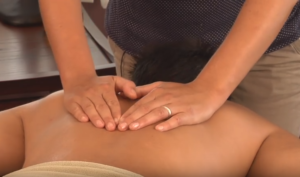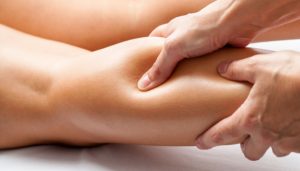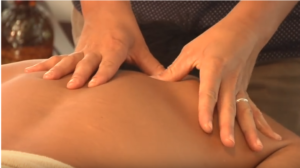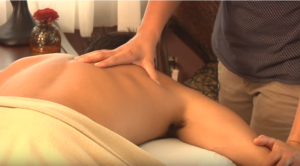Longitudinal gliding is the basic technique of long, gliding, strokes in the direction of the blood flow, or longitudinal. Longitudinal gliding is a basic but effective massage technique administered in the direction of the blood flow. It aids the fluid dispersion from the injury site, and thus helps reduce inflammation and swelling. It is also very useful in relaxing tight muscles. The pressure used during this form of massage could also classify it as a deep tissue massage and the same technique could be classified as Swedish massage.
Swedish Massage: Effleurage (Gliding)
 Swedish massage was developed in the 1700s by Swedish physician Per Henrik Ling and include six basic strokes: effleurage (gliding/sliding), petrissage (kneading), friction (cross-fiber motion), vibration, traction, and tapotement (percussion or tapping). The primary purpose of Swedish massage is to increase the blood’s oxygen flow and assist in toxin removal from the muscles.
Swedish massage was developed in the 1700s by Swedish physician Per Henrik Ling and include six basic strokes: effleurage (gliding/sliding), petrissage (kneading), friction (cross-fiber motion), vibration, traction, and tapotement (percussion or tapping). The primary purpose of Swedish massage is to increase the blood’s oxygen flow and assist in toxin removal from the muscles.
Effleurage comes from the French verb ‘effleurer’, to stroke, which is why it can be referred to as stroking or gliding. The massage can be varied in terms of: pressure (superficial to deep) and direction (longitudinal or transverse to the muscle fibres). Longitudinal and softer strokes are typically used to spread oil at the beginning of the massage, warm up the tissue and to make an initial assessment. These strokes tend cover a broad area with a wide palm.
To apply deeper longitudinal strokes, more pressure is applied, concentrating on any areas which feel harder, tighter or more tense. The primary effects of these strokes are to promote circulation and identify areas of tension within the soft tissue.
Deep Longitudinal Stripping
Deep longitudinal stripping technique involves a slow longitudinal gliding stroke applied to muscle or other soft tissue with the intent of encouraging tissue elongation and elasticity. Deep tissue massage is another common name for this technique, although this term can be misleading because many different techniques access deep tissues of the body. It is an excellent method for reducing hypertonicity and increasing pliability in muscles and connective tissues. When deep longitudinal stripping technique is applied to muscle fibers, it helps encourage lengthening and elasticity in those fibers leading to a reduction in hypertonicity (muscle tightness) and increased flexibility.
This technique can be applied with varying levels of pressure, and is usually most effective when the pressure level is moderately deep. Adequate pres- sure is usually when the patient perceives the pressure is right on the pain/pleasure threshold. In addition to the patient's feedback, our massage therapist is skilled in reading the patients' tissue response to gauge the appropriate pressure level.



